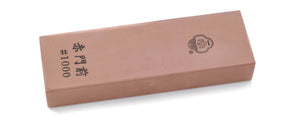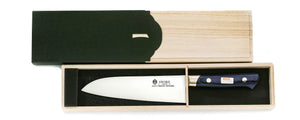5 tips for a first time Japanese knife user
1. Strong Steel, but not indestructible
The blades on Japanese knives are much harder than most other kitchen knives, as the knives are made from steel with a high carbon content and heat treated to a high hardness. This means they can chip if used on hard objects. Avoid using your new Japanese knife on bones and extra hard surfaces such as steel bench tops or bamboo cutting boards.
2.Steel can stain
- There is potential for any knife to rust or stain, regardless of whether it is stainless steel or Carbon Steel. Wash your knives after every use to remove any food or debris and absolutely avoid putting them in a dishwasher unless your knives have specifically been designated as dishwasher safe.
Don’t forget to dry your knives before storing them in a block, on a magnet or in a drawer to prevent moisture spots.
3. It’s not a can opener
Japanese kitchen knives are made for cutting, not prying or leverage. Use your knives how they were designed to be used. Using a Japanese knife as a can opener is going to end badly for you and the knife.
4. Blunt Knives are more dangerous
Even the best knife will dull at some point, and you should avoid using a dulled knife. As the edge of a knife becomes rounded, it’s more likely to slide off, bounce or deflect during use, increasing the likelihood of damage to the blade or worse, your fingers. You can sharpen your knife at home using a whetstone or diamond stone, or take it to a professional (like us!) to sharpen.
5. Enjoy!
A Japanese kitchen knife is made for you to have a better cooking experience, a safer cooking experience and hopefully a lot more fun in the kitchen. Enjoy!































